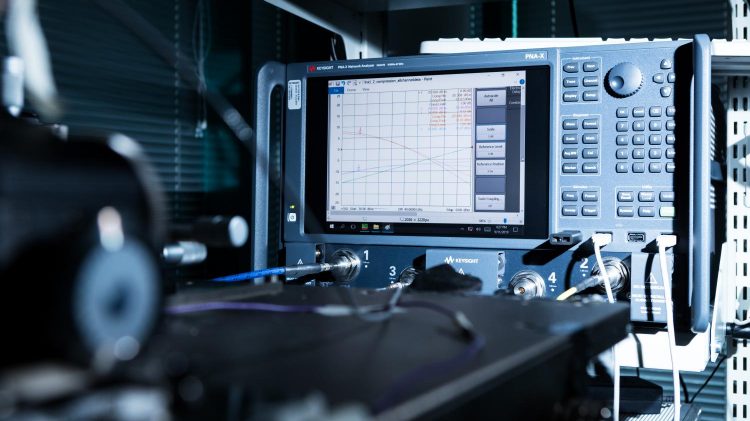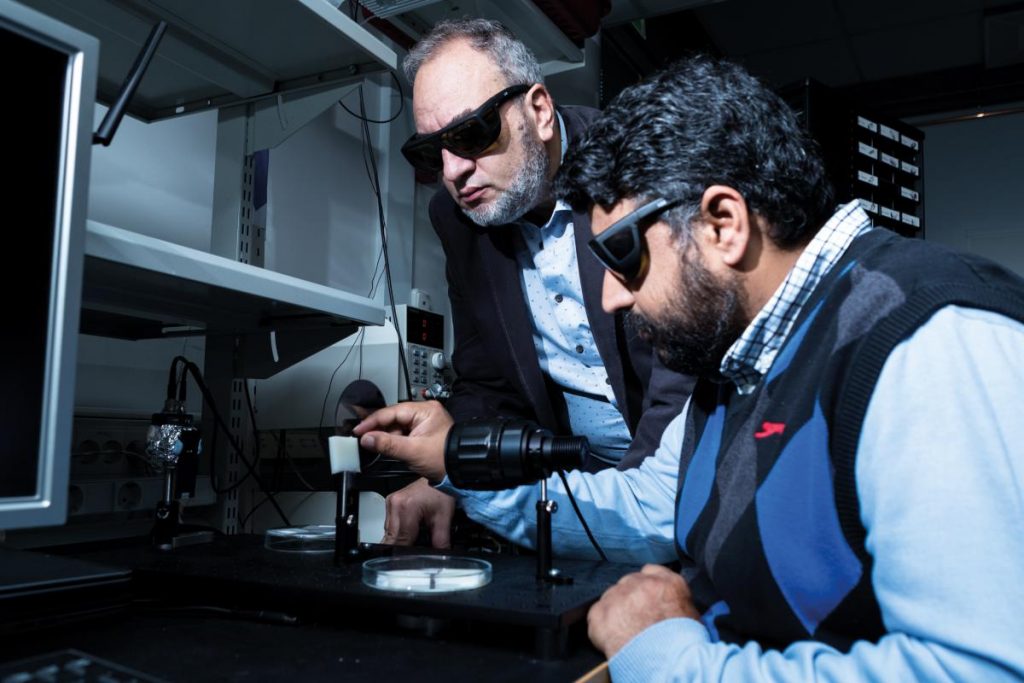
Secure light-based communication through biological tissues
Professor Marcos Katz’s team has recently demonstrated how light can be used to convey data to and from in-body devices such as implants.
Visible light communications (VLC), and optical communications overall, caught professor Marcos Katz’s interest when he and his team first demonstrated in 2017 a reconfigurable hybrid wireless network exploiting VLC and radio technologies. The network seamlessly switched from radio to optical, or vice versa, according to the condition of the channels, context information, local policies and others.
“VLC is a great complementary technology to radio,” Katz says. “Its unique advantages include high security and privacy, no electromagnetic compatibility issues, support for high-data rates, all key characteristics needed for 6G.” These features come in handy in his latest research challenge communications through biological tissues.
Katz’s team has recently demonstrated how light can be used to convey data to and from in-body devices such as implants. “We are using near-infrared light to transmit data across biological tissues,” Katz says. “At these wavelengths, light propagation inside biotissues is more favorable, though transmitting data through biotissues is very challenging.”
With the testbed, the team can utilize different types of parameters such as modulation schemes and transmit power. “We have realized all experiments with artificially manufactured optical phantoms as well as real bones and samples of fresh meat,” Katz says. “The optical phantoms used in the experiments have been developed here at the University of Oulu.” Currently, there are no plans for in vivo measurements, but the team complies strictly with regulations defining the maximum allowed light power per square millimeter in human tissue.
Recently, some authors have proposed the use of light for very short links, in the range of a few millimeters, for instance for communications with devices under the skin. “We have demonstrated through experiments that we can increase the range considerably to several centimeters, allowing communications with deeply implanted devices as well as between in-body devices,” Katz says. He foresees that direct communication between implanted devices and out-body devices is also possible, even when these nodes are meters away from the body.
While initial results show data speeds of tens of kbps, the use of multi-source/receiver structures such as MIMO and advanced modulation schemes can increase the speed considerably. It is also possible to use pulsed communications to increase communication range in the tissue. Light has also the major benefit that it can be employed without concerns on radio frequency exposure and privacy, Katz says. Previously, radio communications have mostly been used to transfer information to implanted devices.
Third parties or malicious users can, in principle, jam communications links, eavesdrop on signals, and accede devices. Recent research also shows that commercial pacemakers and defibrillators can be hacked, which has eventually led to massive recalls of devices. Light-based communications, on the other hand, is local which practically prevents remote hacking attempts, Katz points out.
The team is continuously improving the measurement setup. Upcoming capabilities include a precise temperature control of the samples. “We plan to continue extensive measurements to be able to characterize biological tissues as a medium for wireless communications,” Katz says. “Based on the results, we will be able to develop channel models and design transmitters and receivers optimized to the channel. We also plan to compare radio and optical communications in biotissues.”
Katz has a clear long-term goal. “In the future, we will be able to carry out key medical ICT functions such a diagnostics, treatment, wireless communication, activation, inhibition and monitoring of cell activities and others by exploiting a unique and highly secure light-based system,” Katz says. “Once we understand the biotissues as the transmission medium, we can design a full communication chain matched to it.”
